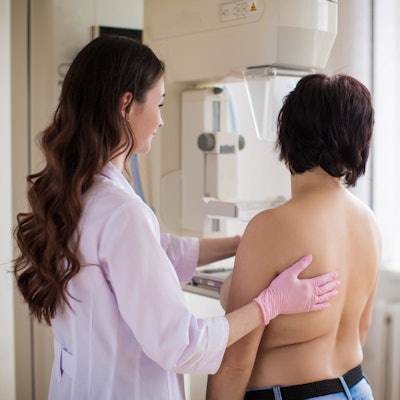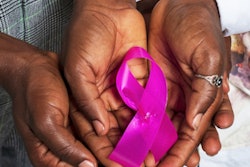
Identifying and understanding high-risk breast cancer patients is important for individualized care and more efficient practices, according to a study of over 9,000 women published April 22 in Current Problems in Diagnostic Radiology.
A team led by Dr. Neema Patel from the Mayo Clinic in Jacksonville, FL, found different care methods being offered to a screening mammography population, of whom over 700 were considered high risk, in an effort to better understand women in this cohort.
"Identifying patients with a high risk for breast cancer in a screening population helps direct appropriate resources to those who may benefit from or require additional surveillance or testing," Patel and colleagues wrote.
Breast cancer care isn't a one-size-fits-all process since the disease is heterogeneous in how it presents itself and what causes it in different women. These include genetic and nongenetic risk factors, as well as tumor subtypes.
This makes managing breast cancer challenging. Previous research suggests that strategies tailored to individual patients have greater success for effective care, screening, prevention, and treatment. Risk assessment models are available widely, but their respective impacts vary depending on individual practices.
Patel et al wrote that practices should understand their respective patient populations and personalize management strategies to be an effective breast cancer screening program.
The study authors wanted to find out the downstream outcomes of using the Tyrer-Cuzick model in women undergoing screening mammography. They wrote that this was to better understand the clinic's prevalence of high-risk patients, assess its use of resources, and identify improvement opportunities.
The researchers looked at data from 9,061 women who had a screening mammogram between July 2016 and July 2017. The women were screened with the Tyrer-Cuzick version 7 risk assessment model to assess their lifetime risk of breast cancer.
Out of the total, 701 women were classified as high risk, and 276 of these participated in a breast center consultation. These women received primary prevention lifestyle education, including weight management, exercise, nutrition, and alcohol avoidance.
Out of these, 141 completed MRI scans for supplemental screening. The researchers found 10 BI-RADS 3 assessments, seven of which were stable or benign on follow-up, and a total of nine BI-RADS 4 assessments. Three of the BI-RADS 4 lesions were found to be malignant and needed surgical consultation.
Clinicians offered risk-reducing medication to 79 women, but only six women adopted it. Forty women, meanwhile, completed genetics testing. Out of these, 15 women had positive results, which researchers wrote were "primarily" heterozygous or variants of uncertain significance, while 21 women had negative results.
A total of 34 women underwent an image-guided biopsy, including 20 biopsies performed with ultrasound guidance, seven with stereotactic guidance, and seven with MRI guidance. Eight women needed surgery, including three mastectomies for malignancy, one lumpectomy for malignancy, and four excisional biopsies for high-risk lesions.
Based on their findings, the study authors wrote that practices could set customized parameters and thresholds on how to best identify and interact with high-risk patients.
"For example, our practice has recently extended the invitation for breast center consultation to more patients, including those with dense breasts on mammography, noting the limitations of mammography for these patients and their slightly increased risk of breast cancer," they wrote. "In so doing, we recognize that casting this wider net brings in more patients of average and intermediate risk, but we remain capable of distinguishing which patients require additional services while not impairing access."
The authors added that having a standardized method for contacting patients and providers can help with return visits, writing that they found it effective to notify both to encourage shared decision-making in their breast care.




















